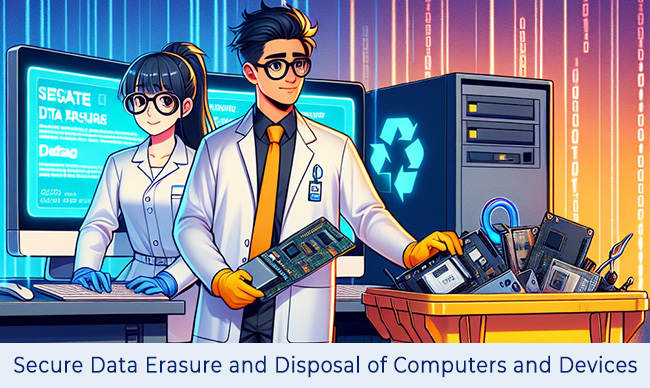Secure Data Erasure and Disposal of Computers and Devices

New semester begins, and you have some shiny new electronic gadgets. On the flip side, you also have some old devices that you no longer use.
Here’s how to erase data and safely dispose of computers or storage media to prevent unwanted information disclosure.
Why Deleting and Formatting May Not Securely Erase Data
For PCs and external storage devices, deleting a file from your device doesn't erase the data completely. It just removes the way to find it. The data stays put until new data covers it up. Before so, there are tools that can find and restore deleted files.
Similarly, formatting your device prepares it for new files, but doesn't always delete all the old ones. Sometimes, you can still get back lost data using special tools after formatting.
Overwriting
By overwriting data multiple times, it becomes extremely difficult to recover the overwritten information. There are commercial software tools and services available that can securely delete data by overwriting it.
Degaussing
For traditional Hard Disk Drive (HDD), degaussing is a method to magnetically erase data from magnetic media by exposing it to a strong magnetic field. Degaussing usually takes much less time than overwriting.
Physical Destruction
An ultimate method to securely delete the data is to physically destroy the storage media itself. After the media is destroyed, it can no longer be reused as originally intended, so it is more suitable for the storage device that once processed or stored highly sensitive information.
Reference:
Guidelines for Securely Removing Data & Disposing Storage Device
back to issue
|






